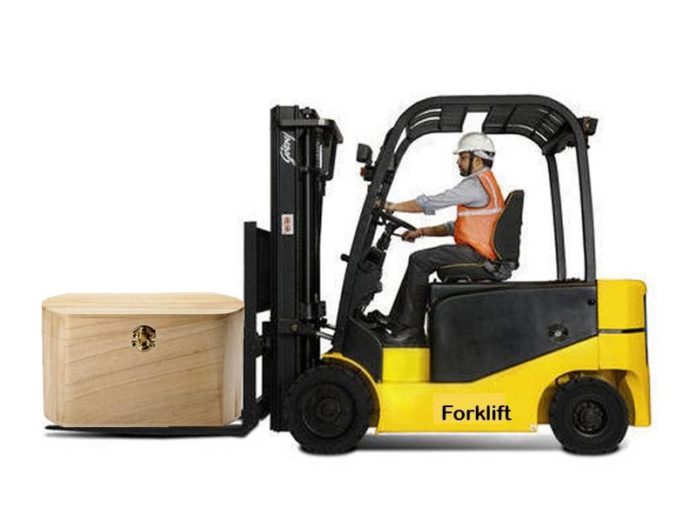Forklift: Tips to Keep Your Workplace Safe | Workplace safety and productivity can go hand in hand too. One does not have to compromise with the regulations because of deadlines, or profits. But, the question of ethics and responsibility can be left for another time. We want to talk here about a range of forklift tips that can keep your workplace safe, and operational at most times. These tips are handy in daily activities and save a lot of time too.
What Are Forklifts?
For those who are not aware of this industrial vehicle, and equipment, it comes to use in many applications. As the name mentions, it’s all about lifting, and the workplace doesn’t need a helping hand, albeit mechanical. Because of this, forklifts are an incredible piece of equipment and come in use to speed up processes, protect employees and workers from health and safety hazards.
However, sometimes they can also prove to be dangerous because of forklift accidents that occur in 1000s every year. This can result in minor to major injuries too, and usually, the unsafe operation is strictly forbidden without experience. Therefore, operatives who wish to work on a forklift must undergo training, and gather experience.
How to Offer Proper Training?
In order to use a forklift properly and drive it around, one must know the vehicle and its controls. These are the least items to focus on, and being in the business, you can surely do so. This must not be a choice, but an obligation. Legal regulations make it mandatory as well for employers to demand and train their workers for using a forklift, and keep them safe during the handling.
- The tips to keep and maintain a safe workplace around forklifts are given below.
- Always abide by safety rules on wearing the proper gear e.g. hard hats and helmets.
- Inspections of the equipment should be regular and without fail.
- Undergo starting a forklift, by following proper reset and checks.
- Check the surrounding for proper feasibility and operating conditions.
Avoid hazards by taking care of safety protocols like the use of horns, slowing at corners, and so on.
Once you abide by the above rules and checks, using and maintaining a dozen forklifts in a workplace like a warehouse will never be a big deal. But, it is always because of human error that accidents happen, and safety in a workplace should always be the top concern. In fact, many forklift vendors and training providers from Sunshine Coast forklifts can help you in this regard.
Yes, going fast will get your job done in fewer seconds, but slowing at the corner will not reduce the profit margin of the company so much. So, workers can both be productive and also complete deadlines. Not just in the case of forklifts, but any such equipment in use.
We shall elaborate on the above points below for a proper address of all of the issues.
First, Try to Avoid Hazards Because These Are Issues that Give Rise to Accidents
It is important to check the area that you will be working at and checks for the road, the area, the terrain for any type of obstacles. Make a map in your head regarding all these, and check if this can cause a problem like tipping the vehicle over, and injuring a fellow worker.
- So, be aware of bumps, humps, and slippery ground.
- Check for uneven surfaces too because they are the main problems, especially when carrying heavy loads.
- Try to avoid loose materials and objects which are not packed properly.
- Use the horn to safely make turns, slow down at corners, and curves, because there may be people to the blind spots.
- Always maintain a safe maximum distance from other operatives and people because this helps to break and to stop at a safe distance when at full speed.
Keeping the Surrounding Map in the Head Is Key
Simply because your surrounding will guide you to manage the forklift properly and with extra caution if the need arises. Follow the site rules, speed limits, and safety guidelines that you have. Most places involve things like running only on designated roads and then keeping the speed below a certain level like 10 miles per hour, and checking for signs like low ceilings, doorways, and compact gullys, loading, and reloading bays, and so on. Then, there can be ramps, docks, and corners where the forklift can get stuck, so avoiding such areas will also need your map memory.
Before Starting a Forklift, Reset Everything and Check the Equipment
It is often possible that others use the forklift and leave it at a different setting and adjustment that you use it with. Because it is just equipment, and has several controls, before starting a forklift, and ramping up at great speed, check the mirrors, controls, seats, and other adjustment panels. It is wise to reset everything, and check for the forklift all around for broken or damaged parts, and so on.
- Mirrors should always be in a position that gives the driver a clear view of both sides.
- The controls and seat adjustments should be safe and according to the comfort of each driver. The operative must then proceed.
Conclusion
Using safety regulations is the big thing here. From inspecting brakes, steerings, lights, horn, and controls to operating a forklift, follow all safety rules. And, keep the site safe and protected from harm is also the collective responsibility of the employer.














